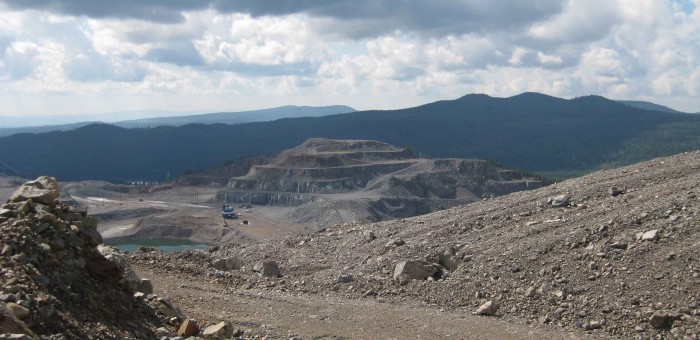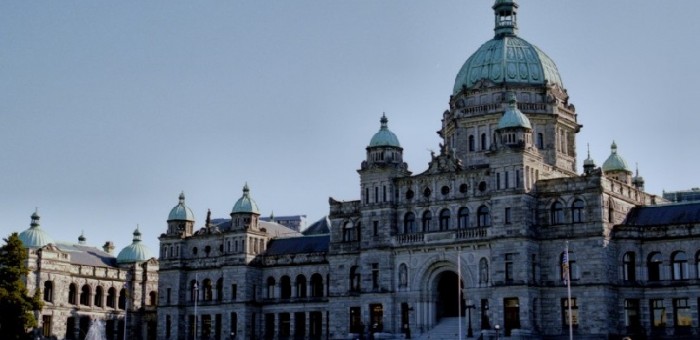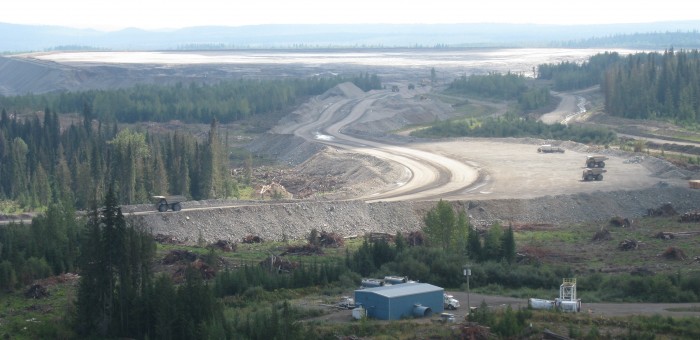Challenges Facing Mining in British Columbia
Introduction
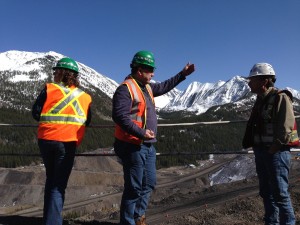 Earlier this week I published an account of my recent trip to the Kootenays where I visited a number of mining operations, and met with people in local communities. Mining is a key economic sector underpinning BC’s economy. The industry directly employs 10,720 British Columbians, contributes $8.5 billion to BC’s GDP and a further $511 million in tax revenues to provincial coffers. Numerous small communities throughout our province depend on mining for their survival.
Earlier this week I published an account of my recent trip to the Kootenays where I visited a number of mining operations, and met with people in local communities. Mining is a key economic sector underpinning BC’s economy. The industry directly employs 10,720 British Columbians, contributes $8.5 billion to BC’s GDP and a further $511 million in tax revenues to provincial coffers. Numerous small communities throughout our province depend on mining for their survival.
While we have much to celebrate about British Columbia’s mining industry, there are also a number of challenges that must be taken seriously. The BC Government has a critical role to play in ensuring that the standards that regulate this industry are kept up to date, and that in addition to the economic benefits mining provides our province, its social and environmental impacts are being accounted for seriously.
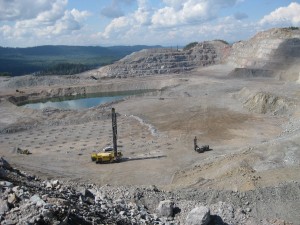 To explore some of the challenges facing this industry – and to highlight some of the solutions that are readily available, I want to turn to two specific and related issues. First, I want to explore how mines manage their tailings ponds. I will specifically look at what we have learned since the Mount Polley tailings pond breach.
To explore some of the challenges facing this industry – and to highlight some of the solutions that are readily available, I want to turn to two specific and related issues. First, I want to explore how mines manage their tailings ponds. I will specifically look at what we have learned since the Mount Polley tailings pond breach.
The second issue I will examine concerns the enforcement and regulatory functions of government and whether adequate funding is being provided by government to ensure that it is managing the environmental and social consequences of mining operations.
Impacts of the Tsilhqot’in decision
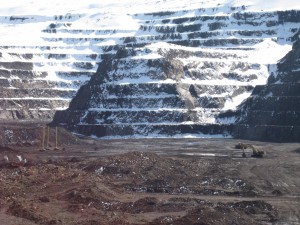 Before diving into these issues, I think it is first important to acknowledge that for the mining industry in BC to continue to succeed, and do so in way that is environmentally and socially responsible, the BC government must ensure it is addressing the requirements placed on it by the Tsilhqot’in decision. We are already seeing examples of how this decision may affect mining investment. It was announced earlier this week that the BC Government bought back 61 coal licences from a mining company in the Northwest of the province, in order to provide a longer window for the BC government to engage in more meaningful government-to-government negotiations with the Tahltan First Nation.
Before diving into these issues, I think it is first important to acknowledge that for the mining industry in BC to continue to succeed, and do so in way that is environmentally and socially responsible, the BC government must ensure it is addressing the requirements placed on it by the Tsilhqot’in decision. We are already seeing examples of how this decision may affect mining investment. It was announced earlier this week that the BC Government bought back 61 coal licences from a mining company in the Northwest of the province, in order to provide a longer window for the BC government to engage in more meaningful government-to-government negotiations with the Tahltan First Nation.
Whether or not this specific policy tool — the re-purchasing of mining licences — becomes commonly used by the BC government, the status quo of mining development is likely to change. The Tsilhqot’in decision made it clear that First Nations have significant say, if not an outright veto, over developments on their land. Last summer the Tsilhqot’in First Nation established new rules for mining development on their titled land. These rules require companies to minimize negative impacts and provide revenue sharing with the community.
Mining companies who wish to develop new mines in British Columbia will need to put an even greater focus on consulting, and ultimately addressing the concerns of not only the BC Government, but First Nations who may have inherent title rights to the land.
Learning from Mount Polley
The mining industry in British Columbia was rocked last summer when the tailings pond at Mount Polley breached its impoundment dam, and released almost 25 million cubic meters of tailings and waste water into the Hazeltine Creek, and down into Quesnel Lake.
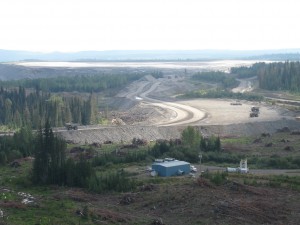 I wrote about this breach when it first happened, and after visiting the mine site and the surrounding communities, I explored in detail what had happened, and what some of the consequences were likely to be. Finally, in January of this year, the Independent Expert Engineering Investigation Review Panel published their report on the Mount Polley Breach. This Panel was empowered to investigate and report on the cause of the failure of the tailings pond facility that occurred on August 4th, 2014 at the Mount Polley Mine. In addition, they were asked to provide recommendations regarding how such an incident could be avoided in the future. It is these recommendations that I will focus on.
I wrote about this breach when it first happened, and after visiting the mine site and the surrounding communities, I explored in detail what had happened, and what some of the consequences were likely to be. Finally, in January of this year, the Independent Expert Engineering Investigation Review Panel published their report on the Mount Polley Breach. This Panel was empowered to investigate and report on the cause of the failure of the tailings pond facility that occurred on August 4th, 2014 at the Mount Polley Mine. In addition, they were asked to provide recommendations regarding how such an incident could be avoided in the future. It is these recommendations that I will focus on.
The Mount Polley tailings pond breach has shattered public confidence in government and industry ability to adequately protect the natural environment during mining operations. Regaining public trust and confidence is perhaps the greatest challenge facing the mining industry. First Nations, the Alaskan Government and Environmental groups have all raised similar concerns. How industry and government collectively respond to the Mount Polley breach will be critical in rebuilding this trust. And an ongoing examination of how mines are managing their tailings and waste, as well as a determination as to whether or not these reflect best practices, will almost certainly be one of key elements of moderating the concerns of British Columbians.
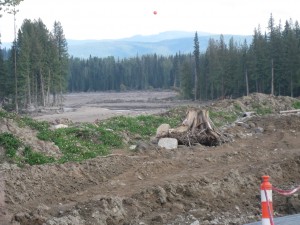 The Expert review panel touched on this point at the start of Section 9 of their report. Section 9 – entitled “Where Do We Go From Here” – explored how the BC mining industry can use best practices and best available technologies (BAT) to reduce failure rates to zero.
The Expert review panel touched on this point at the start of Section 9 of their report. Section 9 – entitled “Where Do We Go From Here” – explored how the BC mining industry can use best practices and best available technologies (BAT) to reduce failure rates to zero.
In the introduction to this section, the Panel rejected the concept of a “tolerable failure rate for tailings dams”, citing concerns that this would institutionalize failure. To quote from their report: “First Nations will not accept this, the public will not permit it, government will not allow it, and the mining industry will not survive it”.
A similar concern was voiced this week by Alaskan government, industry leaders and First Nations, who were in Victoria to meet with Minister’s regarding their concerns about the scale of development taking place in the British Columbia.
The tailings breach at Mount Polley was cited as having raised concerns about the potential impacts on the fishing industry in the region. The Alaskan delegation also felt that the review process in British Columbia was inadequate and not placing enough focus on potential cumulative impacts.
Interestingly both the Expert Review Panel and the group from Alaska pointed to the need to change the way that tailings are managed in this province.
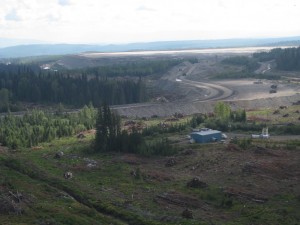 The panel established three conditions that addressed the instability that is created when mines use dual-purpose impoundments, storing both water and tailings. Best available technology would dictate that where possible these two waste products need to be stored in separate facilities that are specifically designed to prevent tailings releases. Critically, this panel also noted that economic considerations cannot be allowed to be the dominant factor in determining what is feasible – the costs of another accident far outweigh the implementation of best practices and technology.
The panel established three conditions that addressed the instability that is created when mines use dual-purpose impoundments, storing both water and tailings. Best available technology would dictate that where possible these two waste products need to be stored in separate facilities that are specifically designed to prevent tailings releases. Critically, this panel also noted that economic considerations cannot be allowed to be the dominant factor in determining what is feasible – the costs of another accident far outweigh the implementation of best practices and technology.
Following the establishment of the Best-Available-Technology (BAT), the Expert Panel made the following recommendations:
- “For existing tailings impoundments: Constructing filtered tailings facilities on existing conventional impoundments poses several technical hurdles. Chief among them is undrained shear failure in the underlying saturated tailings, similar to what caused the Mount Polley incident. Attempting to retrofit existing conventional tailings impoundments is therefore not recommended, with reliance instead on best practices during their remaining active life.
- For new tailings facilities: BAT should be actively encouraged for new tailings facilities at existing and proposed mines. Safety attributes should be evaluated separately from economic considerations, and cost should not be the determining factor.
- For closure: BAT principles should be applied to closure of active impoundments so that they are progressively removed from the inventory by attrition. Where applicable, alternatives to water covers should be aggressively pursued.”
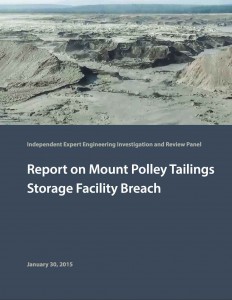 The BC Government has been somewhat responsive to this report. In mid-March they announced new interim rules for tailings ponds which would require companies seeking to build a mine in BC to include the best-available technologies for tailings facilities in their application. The Ministry of Mines are currently completing a review of mining regulations that will eventually establish the new way of doing business in BC.
The BC Government has been somewhat responsive to this report. In mid-March they announced new interim rules for tailings ponds which would require companies seeking to build a mine in BC to include the best-available technologies for tailings facilities in their application. The Ministry of Mines are currently completing a review of mining regulations that will eventually establish the new way of doing business in BC.
However in response to calls from Canadian and American groups to end the use of water based storage facilities, the Minister of Energy and Mines suggested that the expert panel’s bottom line is about reducing water storage of mine waste where you can, and reducing the risk by increasing safety factors. This statement, I fear, betrays a lack of commitment to the true underlying issue highlighted in the report – that the status quo cannot continue and that we must throw out any notion of acceptable risks. I share the frustrations of these groups that we have failed to see an open and transparent commitment to the recommendations of the Expert Report.
This process cannot be taken lightly by government. The Mount Polley breach was devastating to the community of Likely, and even today uncertainty exists as to the full extent of the environmental, social and economic costs that are faced by residents. Evidence of this uncertainty can be found in a recently research paper in Geophysical Research Letters that points to the possibility of ongoing and long-term environmental impacts from the spill on aquatic life. At the very least, long term monitoring of water and sediments in Quesnel Lake will be important.
The solutions are there — they are contained in the path forward highlighted by the Expert Panel. British Columbians deserve government to ensure that it establishes a truly credible mining regime in British Columbia, one which commands the confidence of all those who would feel its impacts. It is only under such a regime, where companies are responsible for the environmental and social impacts of their developments, that mining can be truly successful in our province.
This brings us to the second related issue facing this industry – Government’s ability to regulate and enforce the standards they set for the industry.
Professional Reliance
In 2001 after the BC Liberals were elected to their first term, they began a comprehensive core review to cut the size of government. Premier Campbell asked all government departments to prepare scenarios as to what it would look like with 20%, 35% and 50% cuts to spending. As a direct consequence of government downsizing, technical expertise within the civil service became a casualty. Instead of having technical expertise in house, the government moved towards wide scale use of Professional Reliance in the permitting process. Under the Professional Reliance approach, the Ministry relies on the judgment and expertise of qualified experts hired by a project proponent.
What is particularly important to note is that in March 2014, the Office of the British Columbia Ombudsperson released a scathing report criticizing the Professional Reliance model with respect to streamside protection and enhancement areas. The report, entitled The Challenges of Using a Professional Reliance in Environmental Protection – British Columbia’s Riparian Areas Regulation made 25 recommendations, 24 of which the government agreed to accept.
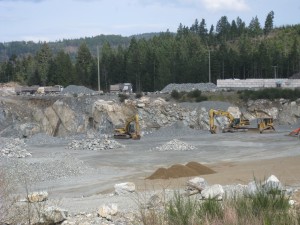 My own personal view is that the government’s approach to follow the Professional Reliance model is fraught with difficulties. The role of the government is to protect the public interest. When government is making decisions solely based on a project proponent’s expert opinion, it is very troubling. Imagine a judge in a court of law only listening to the expert opinion on one side of a case (plaintiff or defendant) and not allowing expert opinion to be submitted from the opposing side.
My own personal view is that the government’s approach to follow the Professional Reliance model is fraught with difficulties. The role of the government is to protect the public interest. When government is making decisions solely based on a project proponent’s expert opinion, it is very troubling. Imagine a judge in a court of law only listening to the expert opinion on one side of a case (plaintiff or defendant) and not allowing expert opinion to be submitted from the opposing side.
There is no doubt that mining plays a very important role in our economy. Mining provides us with the basic elements with which we have built British Colombia into a prosperous and successful jurisdiction. However, the mining industries’ importance to our economy does not disconnect it from its responsibility to conduct itself in a way the is both environmentally and socially responsible. The Expert Review panels report made it clear that the status quo is no longer acceptable and that change is needed. However, for industry to embrace this change, the BC government needs to step up to the plate. The lack of funding for the compliance and enforcement sections of our resource and environment ministries is putting us at risk of another accident. Furthermore, if we expect the mining industry to take the Expert Review panel’s recommendations seriously, we also need to be convinced that government takes them seriously as well.
Let’s Take Politics out of Minimum Wage Policy
Earlier today the BC government announced that they would be increasing the minimum wage by $0.20 and implementing a process to further increase it every September, based on increases to B.C.’s Consumer Price Index (CPI).
While I am sure we can all agree that minimum wage needs to increase and that tying it to the CPI is a good thing, in my view, this announcement is merely the latest iteration of a highly politicized process for determining increases to the minimum wage.
I think it’s time we changed the way minimum wage is determined. We need to get politics out of the process as much as possible. This isn’t wishful thinking – we only have to look at the steps Ontario is taking to develop a better way forward.
In June of 2013, the Ontario government struck a Minimum Wage Advisory Panel to examine Ontario’s minimum wage policy and provide advice on an approach for determining minimum wages in the future. The panel was made up of two business representatives, one organized labour representative, one non-union employee representative and one youth representative. They engaged in a wide sweeping consultation with Ontarians from all sectors of the economy. They held town halls in ten cities, and accepted submissions online, through mail and on their website.
This process culminated in the January 2014 release of the Minimum Wage Advisory Panel Report and Recommendations to the Minister of Labour.
This is a substantial document and I encourage anyone interested in this topic to give it a read. It is very thorough provides the reader with the research and debates surrounding minimum wage policy. It is not an ideological document, but rather willingly highlights controversial issues and the need for further study.
What is important to note right away is that the public feedback the panel received contained a “near universal agreement on making the process of revising minimum wages more transparent, predictable, fair and arms-length from government’s own near-term concerns.”
This was missing from today’s announcement about the B.C. increase — it was yet another political move that wasn’t actually addressing the full extent of the problem. Annual increases tied to inflation will only ensure minimum wage doesn’t fall further behind, rather than asking whether it still has some catching up to do before indexing minimum wage to the B.C. Consumer Price Index.
The Ontario Panel wasn’t tasked with determining if the minimum wage should go up, or what the baseline value should be, but rather to advise how a process could be developed that would address multiply stakeholders concerns. For business, predictability and gradual increases (as opposed to big increases all at once) are important; for labour and those employed at the minimum wage, it’s critical that a process be established that would protect them from falling behind while ensuring careful consideration was being taken to set a rate that improved quality of life.
The fact is, changes to the minimum wage can have wide spread, and not always obvious impacts on the economy. This report does an excellent job of canvassing the research on the economic impact of minimum wages on a variety of factors, including wage distribution, low-wage workers, education and poverty. Almost universally, the research available about the impacts of minimum wage increases is not overwhelmingly positive or overwhelmingly negative, but instead suggests the need for careful and considered policy, rather than using the minimum wage to accomplish political ends.
This is particularly true when it comes to using minimum wage policy to fight poverty. For this purpose, minimum wage is a very blunt tool.
For starters, the demographics of people earning minimum wage limits its effectiveness as a measure to fight against poverty. A large number of those earning minimum wage are in fact students, many who are still living at home with their parents. Furthermore, the report points out that many minimum wage jobs are often taken as stepping stones to higher paying jobs.
This is not to suggest that minimum wage policy has no role to play in fighting poverty. Rather minimum wage is just one of a suite of policies that could and should be advanced, including housing first, skills training and taxation reform, etc. As the panel noted:
“Any linkage between the minimum wage and poverty needs to be situated within the context of various other measures to address poverty…”
It is also important that we don’t limit the description of poverty to those earning the minimum wage. There is a large gap between the minimum wage in British Columbia and the living wage – that is the minimum wage needed to ensure you are meeting your basic needs. We need to ensure that we are providing the supports for people throughout this range of incomes.
The report from the Minimum Wage Advisory Panel concludes with 4 key recommendations:
Recommendation #1: Minimum wages should be revised annually by a percentage equal to the percent change in the Ontario Consumer Price Index.
Recommendation #2: Minimum wages should be revised annually, and a minimum four months’ notice of any wage change should be provided. The effective date of minimum wage changes should be April 1 of the following year. This would result in notification by December 1 of the previous year.
Recommendation #3: The Government should undertake a full review of the minimum wage rate and the revision process every five years. This review should be conducted by a panel of stakeholders and a neutral chair. The mandate of this Panel would be to review Ontario’s past experience with minimum wage revisions within the context of Ontario’s social and economic progress and prevailing practices in other jurisdictions to recommend changes that could better serve Ontario’s future needs.
Recommendation #4: To aid the full review process, and to ensure that Ontario’s minimum wage policies are in step with the needs of it’s citizens, the Government should establish an ongoing research program for data and information gathering its subsequent analysis to address policy-relevant minimum wage issues.
Some of these recommendations will look similar to today’s announcement in British Columbia – and indeed there are flashes of good policy in what the British Columbia government has proposed. Committing to an annual increase to the minimum wage tied to the British Columbia CPI is exactly what was recommended in Ontario. However the policy in British Columbia remains incomplete until we properly de-politicize it. That will take a commitment from the government to empower a properly independent panel to conduct the necessary consultations to determine what the appropriate minimum wage level is, and how future increases will be achieved and reviewed as time moves forward.
At the end of the day, my own view is that the minimum wage is certainly too low. However, I wouldn’t be able to point to a specific number that I believe is the “right” place for a minimum wage. We need an independent, non partisan British Columbia panel to conduct an exercise similar to what was done in Ontario, but expand its mandate to recommend a new minimum wage that puts the needs of British Columbians first.
Rather than pulling a number out of a hat, advancing clear, evidence-based policy on minimum wage that is arms-length from government would end the cycle of putting politics first, and instead start making working people the top priority.
Committee System in Need of Reform
When the BC Legislature’s Aboriginal Affairs Committee last met in 2003 for three minutes and it’s Education Committee last met in 2005 for a total of 12 minutes you know things have to change.
Yesterday, Vicki Huntington, Independent MLA for Delta South and I submitted a letter to the House Leaders of both the BC Liberals and the BCNDP calling for a renewed dialogue on how we can meaningfully improve the committee system in BC. This letter followed up on previous commitments from the government to begin a discussion on this topic.
A properly functioning committee can play an important role of scrutiny and oversight and provide a valuable role for backbench MLAs. Too often legislation is brought forward without the time taken to gather input from MLAs and the wider public. One simple way we can ensure that our politicians are receiving the best possible information on the issues of greatest concern to British Columbians is through a reformed committee process.
There is hope that this conversation may amount to more than just words. Both the NDP House Leader and the Premier have expressed an interest in the previous fall sitting for a dialogue about reforming how our committee system operates.
The lack of committees was recently highlighted when the Official Opposition formed its own Opposition Standing Committee on Agriculture and Food, in absence of one actually sitting in the legislature. Vicki Huntington will act as the vice chair for this opposition led committee.
I think this highlights how broken the system is. We need to see a more collaborative and less confrontational approach to governance in British Columbia.
Please see below for MLA Huntington and my letter to the House Leaders.
February 5, 2015
Dear Minister de Jong and Mr. Farnworth:
Re: Meeting on committee reform
We are writing to arrange a meeting between the House Leaders and Independent MLAs to discuss mutually agreeable opportunities for committee reform. Due to scheduling difficulties we were unable to arrange such a meeting during the fall, but we are hopeful that the spring session will afford us with an opportunity to work together to improve our legislative committee system.
For your records, we have outlined a brief timeline of last year’s events relating to committee reform, and attached the relevant documents and transcripts:
- February 3, 2014: The Member from Delta South writes to the House Leaders to outline proposals for committee reform and suggest the House work together to find agreeable improvements.
- February 27, 2014: The Member from Juan de Fuca introduces the Standing Committee Reform Act, 2014.
- May 29, 2014: During estimates debate, the Member from Delta South asks the Premier to refer the issue of committee reform to the Parliamentary Reform committee. The Premier says she will consider the request in consultation with the House Leaders.
- June 13, 2014: The Member from Delta South writes to the Premier to follow up on her estimates request.
- July 30, 2014: The Premier says she has asked the Government House Leader to canvass the opposition “for input on areas for potential reform.”
- October 17, 2014: The Member from Delta South writes to the Government House Leader regarding a potential agenda for a meeting with the House Leaders and the Member from Oak Bay-Gordon Head.
We believe that all Members would like to improve our committee system. While we understand that the immediate interest of the House Leaders is on changing the estimates process, we urge consideration and discussion of the broader issue. We look forward to working with you both on this issue when the House resumes.
Sincerely,
Andrew Weaver, MLA
Oak Bay – Gordon Head
Vicki Huntington, MLA
Delta South
Mount Polley report emphasizes need for paradigm shift in management of mine tailings
Earlier today the BC Government released its long awaited Independent Expert Engineering Investigation Review Panel Report on the Mount Polley Tailings Pond breach. This Panel was empowered to investigate and report on the cause of the failure of the tailings pond facility that occurred on August 4th, 2014 at the Mount Polley Mine. In addition, they were asked to provide recommendations about how such an incident could be avoided in the future.
It’s important to note that while the panel was asked to point to the cause of the breach, it was restricted from assigning guilt or impeding two other ongoing investigations.
In their conclusions, the panel determined that the “dominant contribution” to the failure was the design of the tailings dam. The design failed to take into consideration key geological issues with the foundation. This was referred to by the panel as the “loading of the gun”. What “pulled the trigger”, and ultimately caused the breach, was the construction of a downstream slope at too steep an angle to account for the weakness in the tailings pond’s foundations. Essentially the wall of the tailings pond could not support the load being placed on it, and gave way without any warning.
This report’s contribution goes far beyond simply identifying the cause of this specific breach – it contains a number of important recommendations, which, if enacted, will go a long way towards improving the safety of how mines handle their tailings.
According to the expert panel, tailings pond technologies, such as those implemented at Mount Polley, have not fundamentally changed in the past one hundred years. Yet, alternatives to conventional tailings ponds exist and have been successfully implemented in other jurisdictions. The question is: why are these other technologies that have been shown to reduce the risk and impact of tailings failures not standard practice in B.C.?
Going forward, we need to do more than simply look at updating new standards of practice and technologies. We also need to explore how the technologies and practices that we have been using – and that were used at Mount Polley – were allowed to fall behind in the first place. One of the key lessons contained in this report is that a thorough safety analysis should come before a conversation about the economic viability of a mine. The government has announced that a number of new mines will be opening over the next few years. In my opinion, it’s critical that proposed new mines are developed within the the scope of recommendations contained in this report.
The Minister of Energy and Mines, Bill Bennett, has committed to a number of initial steps that will explore whether other tailings ponds are at risk of failing due to similar causes that led to the Mount Polley breach. However, there has not been enough clarity about the steps government is taking to look to address the underlying issues that have allowed BC’s mining practices and technology to fall behind best-practice standards.
One of the most important comments in the report is the statement that that in order to achieve zero failures, incremental changes will not be sufficient. This critically important report provides guidance to both government and industry as to how tailings should be safely handled now and into the future using 21st century technologies and practices. It’s imperative that both government and industry act upon all the recommendations of this report.
I will be writing further on this topic in the coming weeks.
Bill 2 – BC at a Crossroads
B.C. finds itself at a crossroads.
It has a clear choice to make: do we support our government’s generational sellout to fulfill its hyperbolic election campaign promises — an all-in approach on LNG — or do we instead continue down the path we started to take in 2008 where we established our continent leading climate policies?
Today marked the 8th day of debate in the legislature on a bill that is a cornerstone of the government’s LNG agenda.
This bill connects two major parts of my life – my career as a climate scientist, and ultimately my decision to run in the last provincial election.
For 20 years I worked as a climate scientist and an educator.
I studied the impacts global warming would have on our communities and I shared that knowledge with young people in my classes and in our schools.
As a scientist, I worked with the B.C. government back in 2008 to develop bold new climate policies for our province. Those policies made us a leader in North America.
In the last 6 years, we have successfully reduced our GHG emissions, while forging a path for our economy that was both economically and environmentally sustainable.
All of that work–all of the progress that we as a province have made in addressing global warming–came to a head this week as we debated a bill that threatens to put it all at risk.
Titled the “Greenhouse Gas Industrial Reporting and Control Act”, this bill would lock us into a path of increasing greenhouse gas emissions, while foregoing the development of a truly diversified and sustainable 21st century economy.
To be clear, I am not opposed to the idea that LNG and the natural gas industry may have a role to play in our economy going forward. But a revitalized gas industry should arise if the market determines it is time for it to do so, not because the government hopes it is time for it to do so.
What I am opposed to, is the government laying out a means to give away our province’s resources in order to land an irresponsible political promise, one that is filled with hyperbole, lacking of substance and void of information and detail. Their approach amounts to a generational sellout.
Most troubling of all is that attempting to realize the government’s LNG pipe-dream necessitates British Columbia walking away from its climate leadership and turning its back on the blossoming economic opportunities that have accompanied this leadership.
As I oppose this bill, and the governments irresponsible and short sighted LNG agenda, I also think it is important to remember that we have another option.
Earlier in the session, I laid out a different vision for a diversified, sustainable, 21st century economy. With new investments in education, a return to properly funded government services and a focus on developing diversified and sustainable economic opportunities, we have an opportunity to build a true 21st century economy here in British Columbia.
As we debate this bill, I would like to invite you to read more about this opportunity. I would also like to invite you to send me your thoughts so that together, we can move our vision forward.
To read more about a diversified and sustainable 21st century economy please click here.

